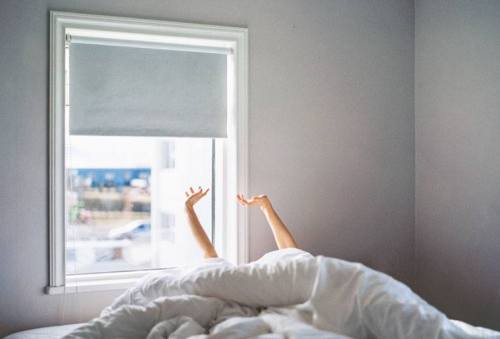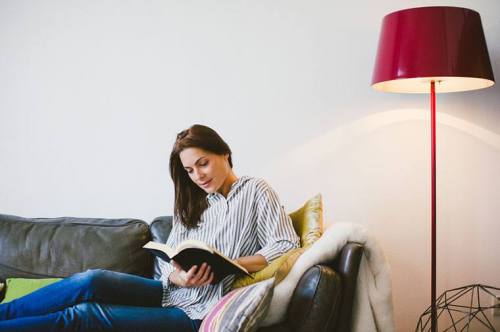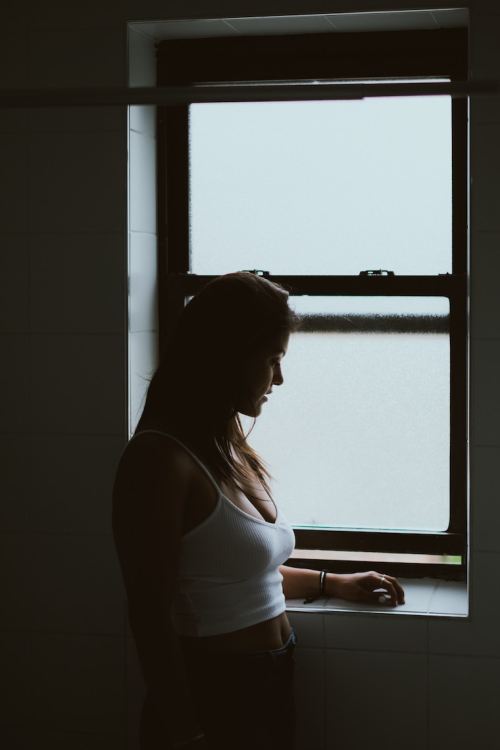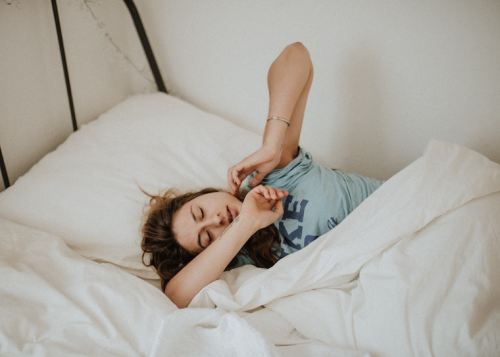You don’t have to be a Game of Thrones buff for the three words—winter is coming—to send a shiver down your spine. That means the days are about to get colder, darker, and downright more depressing.
Science confirms that the correlation between the changing seasons and your mood is a real one. The symptoms of seasonal affective disorder—appropriately known as SAD—can include things like feeling tired, craving carbs, gaining weight, and overall just feeling “meh.”
“I think if you took virtually any of us and put us up at the North Pole in the middle of winter with plenty of food, shelter, heat, water, and company [but still deprived us of light],” says Dan Oren, MD, associate professor of psychiatry at Yale University. “I think we would all develop a severe depression.”
While cases of SAD range in severity, the treatment is generally consistent: light therapy (AKA the thing Ilana was doing—in her own obsessive way—on Broad City). So we rounded up the top tips from experts on how to deal.
If you can’t book a wellness retreat to a far-flung, sunny locale, read on for coping strategies during the darker seasons.

Get your light fix in the morning
Unless you have time to squeeze in a 6 a.m. sunrise yoga class before work, you’ll need to get your morning light another way. Jeffrey Rossman, PhD, director of life management at Canyon Ranch in Lenox, MA, suggests doing this in your bedroom first thing when you wake up or while eating breakfast. “To a certain extent, SAD is a circadian rhythm disorder, so being exposed to bright light in the early hours of the day—in the morning or at noon time—can help set a person’s biological clock in a healthy way,” he says. “What the research shows is that being exposed to bright light helps the body to produce more serotonin, which is a calming neurotransmitter.”

Brighten your bulbs
Even though most light bulbs look identical, they actually aren’t all created equal (which can make a trip to the hardware store feel seriously overwhelming). Dr. Rossman suggests sticking 150-watt bulbs into your ceiling for optimal daytime brightness rather than 50- or 60-watt options. That is, with one caveat: “At night you want to lower the light, and you really want to turn your lights down low so that your body can get ready to go to sleep,” he says.

Get a light box
“There’s some evidence that the part of the light spectrum that has the greatest effect on mood is the blue frequency,” says Dr. Rossman. To maximize the blue light, which studies have found to be particularly helpful for people with SAD, he suggests trying a light box.
“Blue light in SAD light boxes is much brighter than the blue light emitted by laptop screens and phones,” Rossman says. “Nevertheless, the blue light in laptop screens and phones can suppress melatonin production and make it more difficult to fall asleep at night. That’s why it’s a good idea to minimize screen exposure before bed or change the light setting on your device to filter out blue light.”

Try a dawn simulator
Pulling yourself out from under your duvet in time for HIIT class in the middle of February can be straight-up miserable since the sun rises later and it’s likely pitch dark. To make it slightly more bearable, Dr. Oren suggests trying something called a “dawn simulator,” which begins gradually lighting the room at the same time as the sun naturally would on a spring day. “Even for people without SAD, who are having trouble waking up and getting to their job or school, often having a bedside dawn simulator can help the mood slightly and make it easier to get up in the morning,” he says.

Utilize natural light
Even though there are a number of ways to “fake it ’til you make it” with bulbs, ultimately natural light is queen. Dr. Rossman explains that sitting in a well-lit room with big windows during the day can help to elevate your mood. And even though it may be cold and miserable, be sure to get outside as often as you can – especially when it’s sunny. Sunlight is the best way to expose yourself to bright light, Dr. Oren confirms. So, bundle up in your coziest winter wear and aim to spend 30 minutes in natural light, then treat yourself to a homemade turmeric latte to warm your soul once you’re back inside.
In addition to lighting up your life, the experts suggest putting together a “package of healthy habits” to help battle SAD, including meditation and mindfulness, yoga, and exercise. And here are our tips for how to wake up earlier—with minimal misery— so you can get it all done before your 9 a.m. meeting.
Sign Up for Our Daily Newsletter
Get all the latest in wellness, trends, food, fitness, beauty, and more delivered right to your inbox.
Got it, you've been added to our email list.











